AutoBiography - Cars In My Life: Small Wonder - VW Experiences
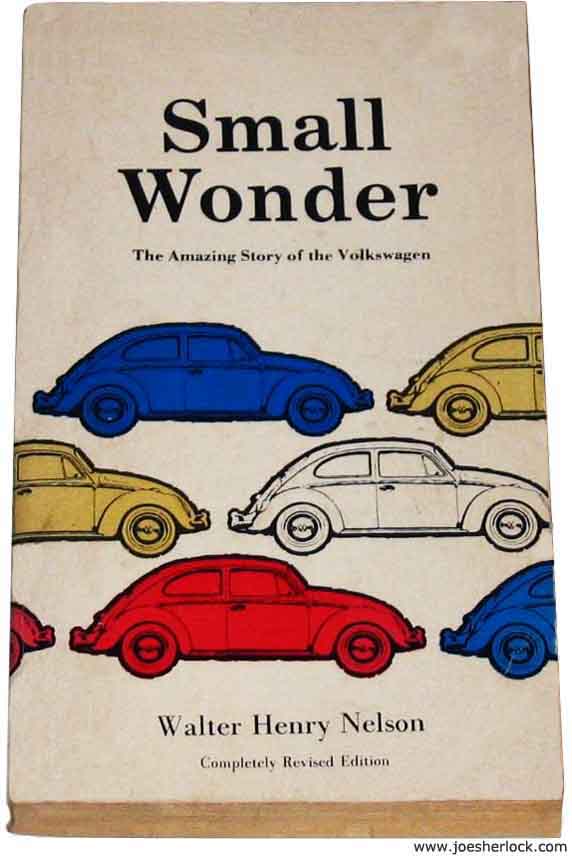
First Bug: When our family's 1956 Ford fell apart from rust after less than six years of ownership, my dad gave up on American iron and placed an order for a new 1962 Beetle - officially known as the Volkswagen 1200 sedan because of its 1200 cc. horizontally-opposed, four-cylinder, air-cooled engine. One of his work friends, Moon, had a VW and my father was impressed with the build quality, the thick sturdy metal and the gas mileage. Moon loved his Bug and regaled my father with tales of its overall awesomeness.
At this point, let's all acknowledge that the Volkswagen story is so ridiculous that it sounds like the script for a Mel Brooks movie:
Adolph Hitler orders a car for the German masses. The Nazi high command has it designed and prototyped. Hitler calls it the Peoples' Car. Only a few examples are made before World War II begins. Germany loses the war. The tooling for the car is offered to Henry Ford II who laughs and turns it down, believing the car has no commercial future. Germans begin to assemble the car in the ruins of a bombed-out factory.
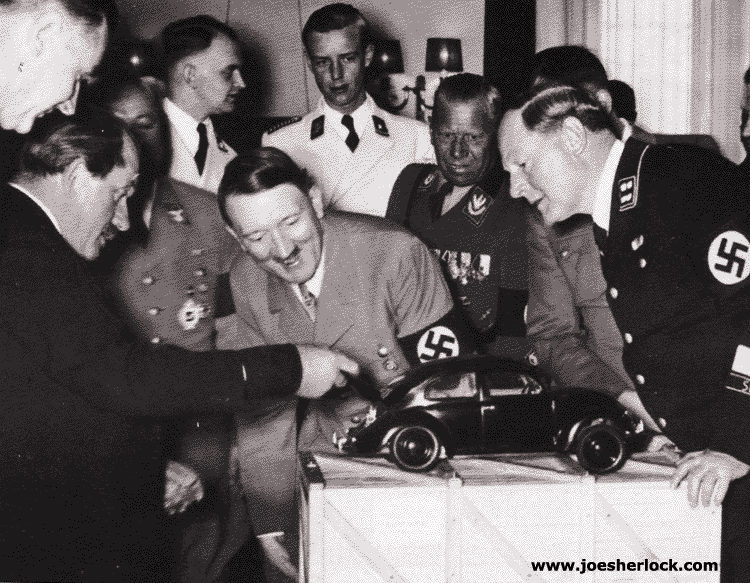
The factory manager hires a Dutchman who knows little English to introduce the car to America. The design is now over 10 years old. The car looks strange and ugly by modern postwar standards. It is underpowered. It doesn't even have a gas gauge. It has lots of other little quirks including an ineffective heater. They don't even change the name - it's still called the Peoples' Car. America falls in love with it anyway. It eventually breaks the long-standing sales record for a single model held by the legendary Ford Model T.

For several years, there's a three-month waiting list to buy the little German car. The strange design remains basically unchanged for over 30 more years. Many of the original quirks are still there decades later.
We had to wait six weeks for our Beetle because demand for VWs was so strong. Since the Ford was undriveable, we walked or took public transit for over a month. The Volkswagen dealer, Wilke Motors, gave my dad a token $50 for our old Ford as a trade-in. He paid about $1,700 for the car - less than he paid for the Ford in early 1956. The Beetle had the optional a radio and whitewalls but my dad had refused to pay for them and made me fork over the money out of my meager summer earnings.
Our '62 Volkswagen was black with a red leatherette interior. When the VW finally arrived, it was the first furrin' car in our neighborhood. We even had a wind-up key with a rubber suction cup to stick on the back deck. I don't remember if we bought it or were given it as a gift. But the VW was novel enough that people found the large silver-colored key amusing.
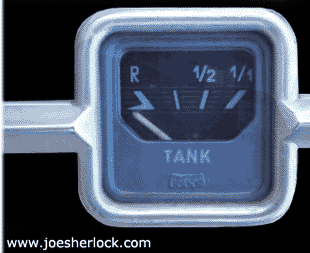 While legend has it that Beetles never changed, small improvements were made every model year. Sometimes during the model year, too. 1962 was the first year that VW Beetles came with an actual gas gauge. The model also featured larger taillights and a spring-loaded hood. While legend has it that Beetles never changed, small improvements were made every model year. Sometimes during the model year, too. 1962 was the first year that VW Beetles came with an actual gas gauge. The model also featured larger taillights and a spring-loaded hood.
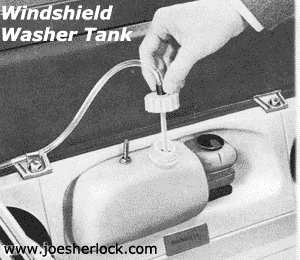 Also new for '62 was a windshield washer powered by compressed air. It was located behind the spare tire. Also new for '62 was a windshield washer powered by compressed air. It was located behind the spare tire.
To service it, one had to depressurize the one-liter holding tank, pour in the washer fluid and then repressurize the tank to the correct 35 psi.
Often, the air pressure would maddeningly disappear before the vessel ran out of fluid. The blow-molded polyethylene tank would burst every few years, providing a fairly predictable revenue stream for the dealer's Parts Department.
The engine only put out 40 horsepower but it was far better than the earlier, 36-horse model. I once dated a girl who owned a 1957 oval-window Beetle - her car was noticeably slower.
A typical 40 hp Beetle required 21 seconds to reach 60 mph and took a quarter-mile to get there. A well-geared four-speed manual transmission allowed the car to keep up with traffic in normal driving.

In late October 1962, our '62 Volkswagen got broadsided by a Philadelphia trackless trolley (trolley bus to you folks who live elsewhere) when my dad was driving to work. The car was declared a total loss. My dad declared that it was a good thing that the car didn't have seat belts or he would have been killed. The impact pushed him over to the passenger's seat of the car and his knee got banged up by the shift lever.
He was amazed at how well the little Beetle held up against the massive PTC transit vehicle. "I don't think the Ford would have done as well," he said.
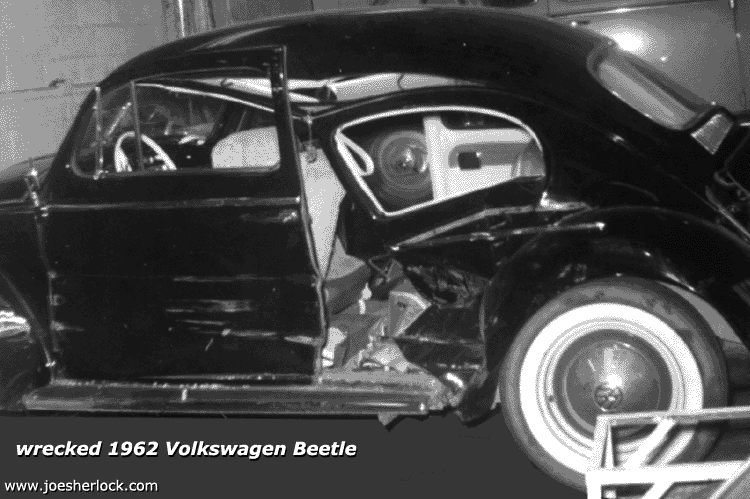
The creamed, less-than-a-year-old VW was replaced by an identical black 1963 Volkswagen sedan (which was later to become the legendary Underdog). When he placed the order, I told my dad, "This time you're paying for the whitewalls and radio." And he did. (permalink)
College Car: A few months later, my grandmother offered to buy me a car for commuting to college - a two to three-hour trip by public transport. I got a bright-red, new 1963 Beetle sedan.
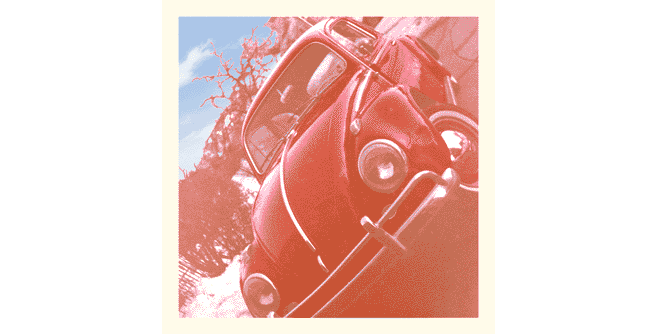
It cut two-plus hours off my daily commuting time. Mass transit is not nearly as good as transportation utopians would have you believe.
My 1963 VW Beetle was made a few months after my dad's and had some subtle changes. My dad's early '63 model still had the Wolfsburg crest emblem on the front. Mine didn't. My car had the updated 'improved' heating system, which really wasn't much better.
Beetles were sturdy and more reliable than most vehicles of the period but they were far from perfect cars. The heater was abysmal, especially the pre-1965 models which had a little spigot on the floor to 'pour on' the heat. Warm air trickled forth in miniscule, individual BTU drips - unless you were driving at 70 mph (the heater had no fan - engine rpm provided the oomph).
I always kept a rag next to the heat spigot in my '63 Bug, so I could wipe the condensation off windshield every few minutes. The defroster was as bad as the heater - the German word for 'defroster' must be Das Emphysema. If any car needed heated seats it was the air-cooled Bug. The factory 'leatherette' could suck all the heat out of buttocks from 3 kilometers away.
VWs of the era had no oil filters and required an oil change every 1,500 miles and valve adjustment every 3,000 miles. Valves were fussy, noisy and went out of whack again a few hundred miles after being adjusted. American cars didn't need such pampering - they had hydraulic lifters and/or self-adjusting valves.
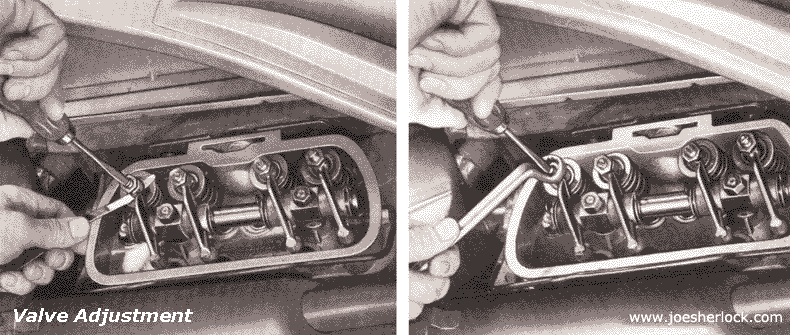
The four-speed manual transmission was always noisy, unless you added some molybdenum compound. To me, that indicated that the gears needed a smoother surface finish.
The glass-covered headlights had the most complex and maddening attachment system ever seen. Tom McCahill once wrote that "if a German had painted the Mona Lisa, he would have painted on a mustache" just for complexity's sake.
Red factory taillights sometimes faded due to bad colorant in the plastic, a problem Detroit had solved decades earlier. New VWs had an unearthly industrial-plasticizer-mixed-with-mustard aroma that was surely carcinogenic to anyone who was not part of the Aryan Super Race.
It took Wolfsburg almost 30 years to put decent sound deadening in the Beetle; owners like me had already DYI'd it on our vehicles.
My car didn't come with a factory radio, so I bought an aftermarket one from a radio/TV store where I worked. It was cheap and worked fine but it was a tube radio with no preset buttons. It took 45 seconds for the tubes to warm up.
At 20,000 miles, my Volkswagen needed a new camshaft. The dealer service department acknowledged that it was a factory defect and replaced it cheerfully ... well, as cheerful as Germans get when they're sober.
|
|
My red Beetle got a flat tire in May 1964 - just as we were leaving for a formal dance. She married me anyway.
|
I kept the car for about two and a half years until I graduated from college and had a regular job. I sold my well-used, faithful red Beetle with almost 60,000 miles on the clock - and many fender dents thanks to my careless and callow fellow students - for $750 and bought a Corvette.
But that's another story. (permalink, 1963 red VW Beetle)
The Keeper: Our family's record for length of car ownership goes to our black Volkswagen Beetle sedan, which I purchased new in March 1967 and sold in June 1995. I traded my '63 Corvette Sting Ray for it and had to put up an extra $310 to get the new Beetle.
The 1967 Volkswagen featured a larger 1493 cc. engine with 53 horsepower. It would do 0-60 mph in a little over 16 seconds. It was the first Beetle with single-unit (non-glass covered) headlights as well as backup lights in rectangular chrome pods.
It also had a 12-volt electrical system and a dual brake system. The heater system was better than the '63 model; the car even had a center dash defroster outlet - a feature introduced in the 1966 models. 1967 models featured push-button door locks, replacing the 1930-style swing handle found on earlier models.
|
|
|
|
My son, at age 8 months, in our '67 Beetle. He later learned to drive in this car.
|
Our 1967 Beetle was probably the most durable car we've ever had. We kept it for 28 years, the longest of any vehicle we've owned and registered it in four states during its time with us.
We purchased it in Pennsylvania. When we moved to New Jersey, the Beetle came with us. We brought both of our newborn kids home from the hospital in it.
I took the car on many business trips. I remember a winter drive to Agawam, MA where I gave a talk at a Society of Plastics Engineers meeting. After a few post-lecture rounds of drinks at the bar, I walked to the parking lot and found that my VW Beetle cranked so slowly that it barely started. A few minutes later, the radio announced that the local temperature was minus 22 degrees. But the little Volkswagen eventually fired up and I chugged back to my motel in the crisp snow.
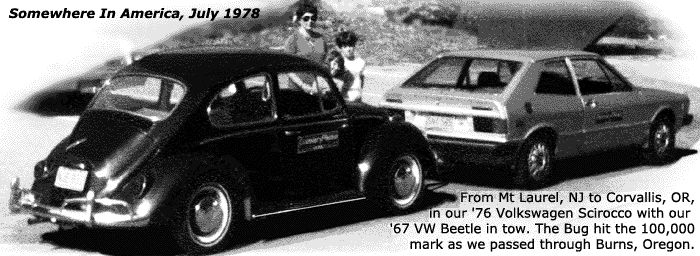
We towed it across country when we moved from New Jersey to Oregon. I piloted my VW Scirocco, pulling our VW Beetle behind with a tow bar. Once we passed Chicago, I felt pretty lonely - very few 'furrin' cars. It seemed like every vehicle in Nebraska was a big Ford LTD. Or Chevy Caprice. Upon our arrival in Corvallis OR, the 1967 Bug was used daily for errands and such.
|
|
My 1967 Beetle on display at the 1983 OSU Concours, including a selection of miniature VWs in a Plexiglas display case.
|
After some detailed cleanup by me and a fresh professional paint job to cover paint which was worn away in spots, the car won first place in its Class at the 1983 Oregon State University Concours d'Elegance. The class was 'Imported cars with original POE price of less than $3,000'.
My kids learned to drive a stick shift with the 1967. My son used it as his high-school and college commuter vehicle.
In the late 1980s, the Corvallis Historic Auto Club scheduled a Memorial Day Trip to Mt. Hood. I had planned to take my 1957 Continental Mark II on the trip but I was having some electrical problems with it and decided to take the Beetle instead. Our tour leader had a Model A but suffered mechanical problems enroute and asked me to take over the tour. And so, the little Beetle lead a parade of old cars up to Timberline Lodge where we stayed overnight. By the time we arrived, it was snowing like crazy. Overnight about four inches of new snow fell. No problem for our Volkswagen - it loved snow. Just like all Beetles. I could crest almost any snowy hill in a Beetle, either by partially deflating the rear tires or placing a couple of hefty friends in the back seat.
When we moved to Washington state, our trusty Beetle came with us.
|
|
|
|
Photos were taken in 1995, just before we sold our 1967 Volkswagen.
|
Over the years, we put over 156,000 miles on our Volkswagen. We never rebuilt the engine (it did have a valve job at 88,000 miles - 6/77). The original clutch and pressure plate lasted for over 130,000 miles.
In the summer of 1995, we sold the 1967 Bug to a collector for more than we paid for it new. It was by far the most cost-effective vehicle we've ever owed. (permalink, 1967 VW Beetle)
Underdog: The '67 was soon joined by my dad's hand-me-down black 1963 VW Beetle which was rechristened as the legendary - to my friends anyway - Underdog. In addition to the special colorful paint job of the cartoon character of the same name on the rear deck (done by yours truly), I installed an oooga horn on Underdog. I also put in a set of red seat belts.
Underdog was our workhorse. I used to be able to haul an incredible amount of stuff in our VW Beetles, I'd simply remove the passenger seat and fold down the rear seat. I once brought home four bales of hay in a VW Bug.
|
|
In November 1972, we threw a 10th birthday party for Underdog. The car got a can of gas and balloons, we celebrated with a special cake. I drove the car around to the back of our house and parked it on the patio by the kitchen sliding glass door for the party.
|
I drove Underdog to work for about 5 years (my wife used our 'good' '67 VW as her daily driver) and then gave Underdog to my brother to take to college. It had over 100,000 miles on it by that point and spent the rest of its life braving the winters - and salted roads - of upstate New York. I think he put another 40,000 miles or so on it before he traded it in on a new '77 Honda Civic.
|
|
|
With bows: a gift to my brother - Christmas 1975
|
Air-cooled Volkswagens were were sturdy, dependable cars (for their time) but 1930s engineering only went so far, even if you assemble the car with great care and expertise. Like old Beetles, Honda Civics are low in cost, cheap to run and incredibly reliable.
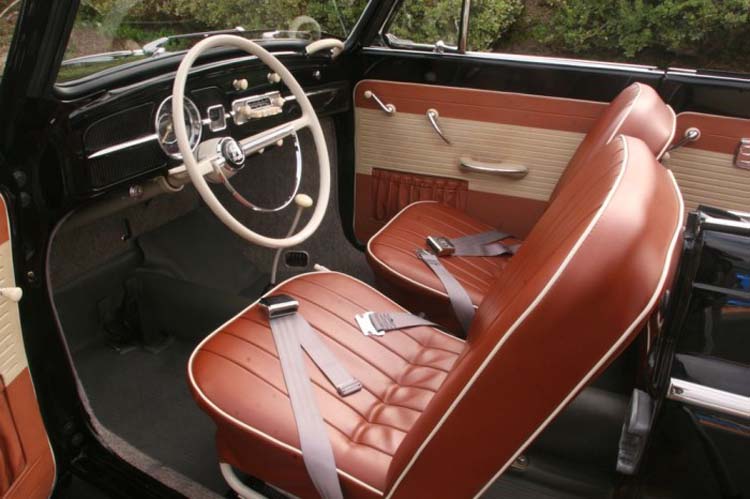
Nevertheless, I remain a fan of the old, air-cooled V-dubs. (permalink, Underdog)
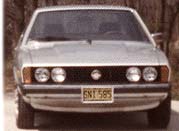 Stylish & Defective: In late 1975, I bought a metallic silver 1976 Volkswagen Scirocco. I had read great things about the car's performance and I had such positive experiences with other VWs, that I thought it would be a smart purchase. Stylish & Defective: In late 1975, I bought a metallic silver 1976 Volkswagen Scirocco. I had read great things about the car's performance and I had such positive experiences with other VWs, that I thought it would be a smart purchase.
The car buff magazines said that it precisely snick-snicked its way through the gears during spirited driving. My own experience was that it snick-snicked its way to oblivion breaking parts along the way. This was one of the worst cars I've ever owned.
The Scirocco was peppy and did corner well though.
Things began badly. The 'factory' air conditioning was actually installed at a VW contract facility in Northern New Jersey. The car arrived without air conditioning. "Don't worry," said the dealer. "The facility is down for the Christmas holidays. We'll schedule you for a January installation and provide you with a free loaner car while the work is being done." When the Scirocco was returned it had A/C and a big dent in the door. "Don't worry, we'll make it right." The silver paint was a match as long as you didn't have sunglasses on. Then the repaint color-shifted and never looked right.
The air-conditioning compressor fell off at 3,100 miles - the bracket broke. VW of America tried unsuccessfully to weasel out of honoring the warranty.
The Scirocco was garaged every night and had spent its East Coast days in a covered parking garage in downtown Philadelphia. When I moved to Oregon in 1978, the car was parked outside during the day but was in the shade part of the time. Within a month of our arrival in the Pacific Northwest, the factory clearcoat began to deteriorate.
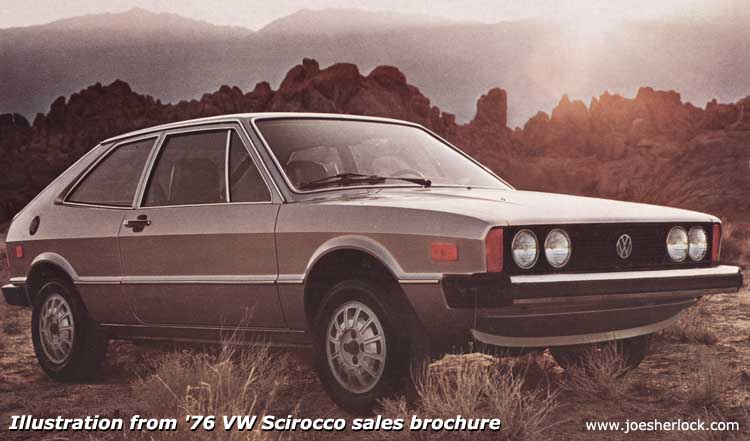
By 1980, the paint was completely shot - big white spots all over the surface, after fewer than 60,000 pampered miles. So much for VW 'quality'.
The day before the infamous Mt. St. Helens eruption, I repainted the Scirocco using spray cans of silver Krylon. I had planned to let the paint 'set' for a week before polishing. But I didn't need to - residual volcanic ash did most of the work for me, as I drove across North Central and Eastern Oregon. The result wasn't too bad if you didn't look real close.
The Scirocco's seat upholstery also wore out quickly, especially the driver's side.
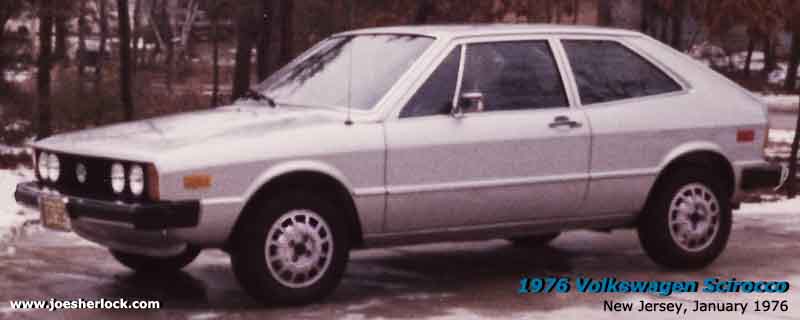
At about 30,000 miles, the engine began seriously burning oil - 400 miles/quart or so. Volkswagen's water-cooled engines from that era were notorious for being early blue-smokers. During a routine service, the Volkswagen dealer slapped a stick-on printed ring around the gas filler hole which read: 'Check oil at each fill up.'
This was the Weasels of Wolfsburg's response to the apparently well-known oil burning tendency of all water-cooled Volkswagens: Get some stickers printed. "Eef you haf ein problem, it is obviouzzly your fault für nicht reading das sticker vitch ve haf now printed at great expensze to us. Guten tag." Jerks.
That's one of the reasons why I'll never buy anything - ever again - from Volkswagen. Für za rest uff mein life. Ja wohl. Jack Baruth has properly described the mixture of arrogance and incompetence that characterized Volkswagen's water-cooled era.
What a dog of a car. I got rid of the Scirocco in August, 1980 with 60,000 miles on the odometer. I traded the troublesome Volkswagen coupe for a brand new 1980 Oldsmobile sedan.
The Scirocco was the last Volkswagen product I ever purchased. (permalink, 1976 Sirocco) (posted 10/31/11)
Next AutoBiography Chapter: 'Livin' The Dream' is posted here.
A chronological list of AutoBiography chapters can be found here.
Other Pages Of Interest
copyright 2011-21 - Joseph M. Sherlock - All applicable rights reserved
Disclaimer
The facts presented on this website are based on my best guesses and my substantially faulty geezer memory. The opinions expressed herein are strictly those of the author and are protected by the U.S. Constitution. Probably.
Spelling, punctuation and syntax errors are cheerfully repaired when I find them; grudgingly fixed when you do.
If I have slandered any brands of automobiles, either expressly or inadvertently, they're most likely crap cars and deserve it. Automobile manufacturers should be aware that they always have the option of trying to change my mind by providing me with vehicles to test drive.
If I have slandered any people or corporations, either expressly or inadvertently, they should buy me strong drinks (and an expensive meal) and try to prove to me that they're not the jerks I've portrayed them to be. If you're buying, I'm willing to listen.
Don't be shy - try a bribe. It might help.
|

